Princesse from Zwijndrecht
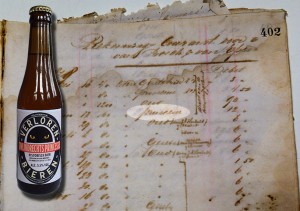 As told in the previous article, historical princesse beer by d’Oranjeboom is now available. In two flavours: the ‘normal’ brown-amber princesse beer after my adaptation of the recipe in the 1866 book De praktische bierbrouwer, and a ‘White princesse’ with wheat. The label says it is ‘is inspired by a 1788 Flemish white beer tribute to the Dutch Princesse beer’. And indeed that year Antonius Parmentier from Bruges advertised his ‘white Dutch Princesse beers similar to those sold in Amsterdam, Rotterdam and Alkmaar’. But a recipe by Parmentier has not been preserved, so the people at d’Oranjeboom have devised one of their own. But is there an element of historical truth in it? Has such a princesse wheat beer ever existed?
As told in the previous article, historical princesse beer by d’Oranjeboom is now available. In two flavours: the ‘normal’ brown-amber princesse beer after my adaptation of the recipe in the 1866 book De praktische bierbrouwer, and a ‘White princesse’ with wheat. The label says it is ‘is inspired by a 1788 Flemish white beer tribute to the Dutch Princesse beer’. And indeed that year Antonius Parmentier from Bruges advertised his ‘white Dutch Princesse beers similar to those sold in Amsterdam, Rotterdam and Alkmaar’. But a recipe by Parmentier has not been preserved, so the people at d’Oranjeboom have devised one of their own. But is there an element of historical truth in it? Has such a princesse wheat beer ever existed?
The answer to this question leads us, oddly, to the town of Zwijndrecht. Not to be confused with the Belgian town of the same name, it is a commuter town near Rotterdam. It mostly consists of never-ending suburbs built from the 1960s onwards. Wedged between other sleepy boom towns, a highway, a railway yard and a freight railway, it is not the sort of place where you’d start looking for beer history. There is hardly a trace of the original village in this concrete and brick jungle. Yet, there once were two village breweries: De Hand and De Ster (meaning, as you might have guessed, The Hand and The Star, respectively). And from the latter, brewing records have survived.
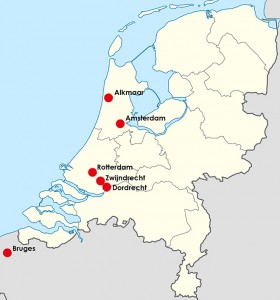 In the 19th century, Zwijndrecht was still a linear village along a dike. Where the through road from Rotterdam ended, there was a ferry to Dordrecht on the other side on the river. Back then there was already some industry, taking the form of an oil mill, a steam-powered hulling mill, a glass factory, a salt factory and a harbour. As for brewery De Hand, there’s not much to say: at the end of the 19th century it was owned by one M. Kavelaars and sons, until it was sold for demolition in 1894. According to newspaper adverts they had a fun old-fashioned range of beers like ‘excellent Princesse, Double Barley, Barley, Kroonen (‘Crowns’) and Old beer’. They also made the Dordrecht winter beer Paulus Jonas.[1] That Kroonen beer must have been a local specialty, because in 1873 all Dordrecht, Zwijndrecht and ‘s Gravendeel brewers produced it, as their cheapest beer.[2]
In the 19th century, Zwijndrecht was still a linear village along a dike. Where the through road from Rotterdam ended, there was a ferry to Dordrecht on the other side on the river. Back then there was already some industry, taking the form of an oil mill, a steam-powered hulling mill, a glass factory, a salt factory and a harbour. As for brewery De Hand, there’s not much to say: at the end of the 19th century it was owned by one M. Kavelaars and sons, until it was sold for demolition in 1894. According to newspaper adverts they had a fun old-fashioned range of beers like ‘excellent Princesse, Double Barley, Barley, Kroonen (‘Crowns’) and Old beer’. They also made the Dordrecht winter beer Paulus Jonas.[1] That Kroonen beer must have been a local specialty, because in 1873 all Dordrecht, Zwijndrecht and ‘s Gravendeel brewers produced it, as their cheapest beer.[2]
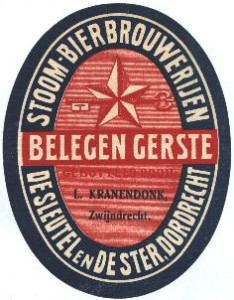 Anyway, it is that other Zwijndrecht brewery that we need to visit: De Ster. It was owned by Mr. Bosch and Mr. Van Epenhuijsen, and in 1887 they bought the Sleutel (‘Key’) brewery in Dordrecht as well. From then on the company was known as brewery ‘De Sleutel en De Ster’ and production was concentrated in Dordrecht. The last brewing day in Zwijndrecht was 8 April 1892 and ‘from this date on, there has been no more brewing at De Ster’. Because the Sleutel, that started switching to bottom fermentation in 1893, did continue and because in the end it was bought by Heineken, various old paperwork from the Zwijndrecht brewery has been preserved. That said, it is quite a mess: in the Heineken archives in Amsterdam there is a gnawed-on copy book of outgoing mail, but oddly the incoming mail ended up in the Van Vollenhoven archives, also at the Amsterdam city archives. And the brewing book is still kept at the archives in Dordrecht.
Anyway, it is that other Zwijndrecht brewery that we need to visit: De Ster. It was owned by Mr. Bosch and Mr. Van Epenhuijsen, and in 1887 they bought the Sleutel (‘Key’) brewery in Dordrecht as well. From then on the company was known as brewery ‘De Sleutel en De Ster’ and production was concentrated in Dordrecht. The last brewing day in Zwijndrecht was 8 April 1892 and ‘from this date on, there has been no more brewing at De Ster’. Because the Sleutel, that started switching to bottom fermentation in 1893, did continue and because in the end it was bought by Heineken, various old paperwork from the Zwijndrecht brewery has been preserved. That said, it is quite a mess: in the Heineken archives in Amsterdam there is a gnawed-on copy book of outgoing mail, but oddly the incoming mail ended up in the Van Vollenhoven archives, also at the Amsterdam city archives. And the brewing book is still kept at the archives in Dordrecht.
And this brewing book was of course what we were looking for. It runs from 1875 until the last brew in 1892, and it neatly contains the amount of malt, the number of hectolitres, the original gravity and the amount of hops. Still, it is a bit chaotic. And endearingly honest: once in a while they don’t make enough runnings from the malt ‘because of lack of water’. Sometimes it says, ‘the Beer was slightly too bitter’. Or they use malt ‘which had started moulding alongside the wall’. Brews clear badly, there is bad hops and at a certain moment they can’t measure the original gravity ‘because the cellars were flooded’ and another time ‘because of going on a journey’. How did these people work? Is this what they call real ‘craft beer’?
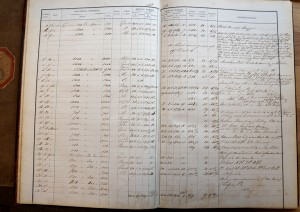 Anyway, what sort of beer did they make? There must have existed a ‘brewing method booklet’ in which they wrote down their recipes, but unfortunately this has not been preserved. In the remaining brewing records many brews are not named, so it is quite difficult to work with. There is some Blank Gerste (‘Pale Barley’), a Jong Oud (‘Young Old’), a test brew of Pale Ale and some remnants of ‘bruin Kroonbier’ (‘brown Crown beer’). There is a whole series of GI and GII, which suggests two sorts of ‘Gerste’ (‘Barley’) beer. There is a brew of Nieuwlicht and a Maastricht beer, unfortunately without a very useful description of the brewing process.
Anyway, what sort of beer did they make? There must have existed a ‘brewing method booklet’ in which they wrote down their recipes, but unfortunately this has not been preserved. In the remaining brewing records many brews are not named, so it is quite difficult to work with. There is some Blank Gerste (‘Pale Barley’), a Jong Oud (‘Young Old’), a test brew of Pale Ale and some remnants of ‘bruin Kroonbier’ (‘brown Crown beer’). There is a whole series of GI and GII, which suggests two sorts of ‘Gerste’ (‘Barley’) beer. There is a brew of Nieuwlicht and a Maastricht beer, unfortunately without a very useful description of the brewing process.
And… there are a few beers to which orange peel is added. For instance, the brew of 22 November 1878. There, they used no less than one fifth of wheat, 1500 grams of hops and ‘1300 grams of coriander, 1300 grams of orange peel, the orange peel is put into the kettle when the beer was running into it, the coriander 2 hours before putting it into the cooling ship (not crushed).’ Interesting, because these additions are reminiscent of the princesse beer in the Praktische bierbrouwer from 1866. Only the liquorice root is missing. Is this a recipe for… a princesse beer with wheat? A white princesse?
Just to be clear: the beer is not given a name in the brewing book. But Bosch and Van Epenhuijsen surely did make princesse beer. It features in a ‘Current Account’ found in their outgoing mail for 1878, among barley and old beer. Also, it is mentioned in newspaper adverts from 1876 and 1877 by their agent in Gouda, one Louis Basoski.[3] Is the 22 November 1878 brew therefore a princesse beer? My answer would be: ‘it is a good possibility’. The recipe actually isn’t very different from the way today’s Belgian white beer is made, but that is not found in De Ster’s range of beers. It just has less wheat.
To make a full circle: d’Oranjeboom now makes a (very tasty, if I may say so) White Princesse, which resembles a Zwijndrecht beer from 1878, from a brewery that also made princesse beer. For the moment, that will have to do. To be certain of my case, I decided to make a test brew of the Zwijndrecht recipe. Care to join me? Here it is:
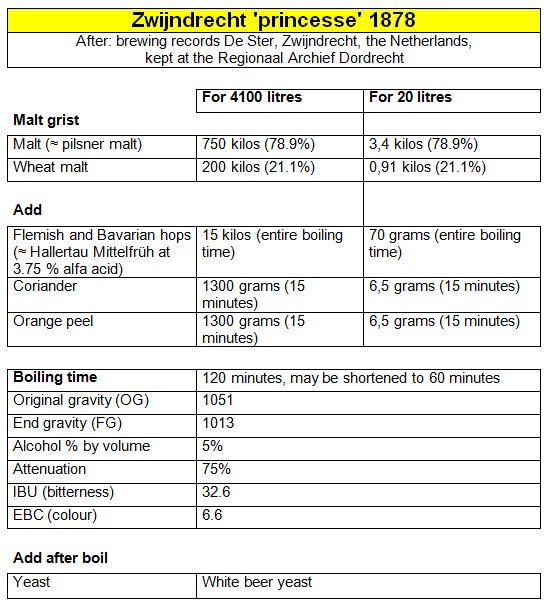
[1] Dordrechtse courant 16-12-1886, 4-7-1888, 24-12-1893.
[2] Dordrechtse courant 20-11-1873. In any case, Kroonen or Kronen beer had nothing to do with the beer made by the Kronen Brauerei in Dordmund, present in Dutch newspaper adverts from 1885 onwards (and still existing today), though confusingly, the Sleutel brewery from Dordrecht had ‘Kronenbier Dortmunder’ labels printed in 1938.
[3] Stadsarchief Amsterdam, Archief Heineken inv. no. 360. De Rijnbode, 23-7-1876; Goudsche Courant, 13-4-1877.
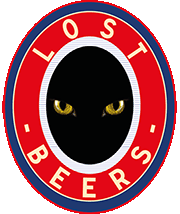



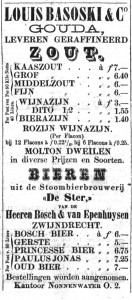


Hi,
A question was posed on Boak & Bailey’s Beer Blog: “is there a true beer of the somme? not looking for a historic recipe (would be nice) but a beer au terroir?”
The link is here http://boakandbailey.com/2016/07/qa-is-there-a-beer-of-the-somme/
Not sure if this is of interest to you but maybe you have some thoughts.
Regards,
Liam